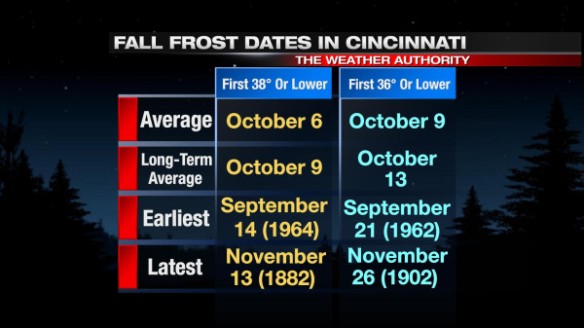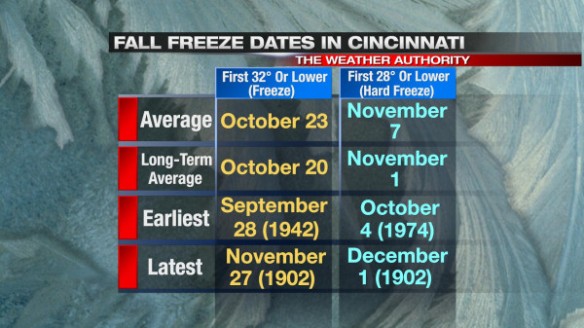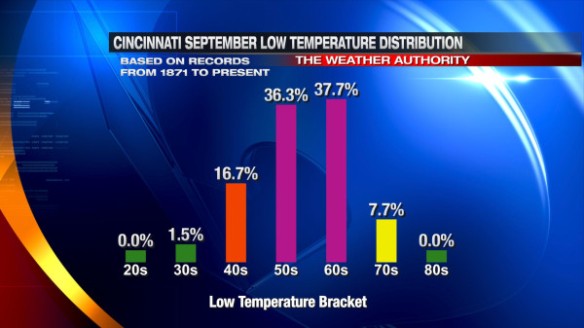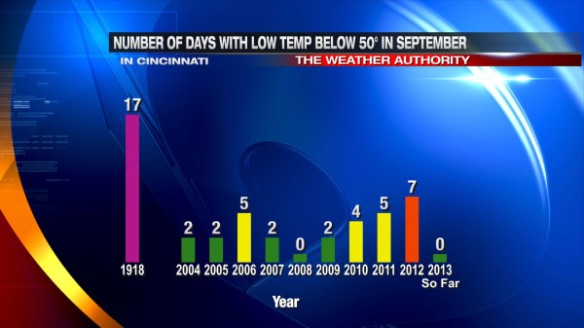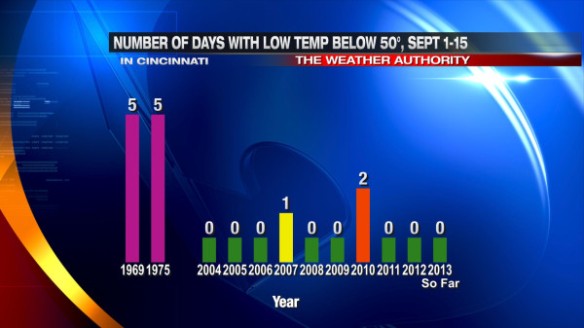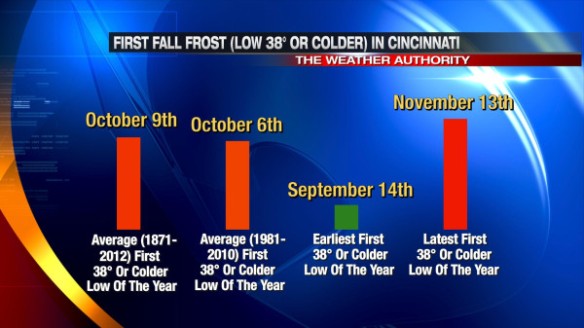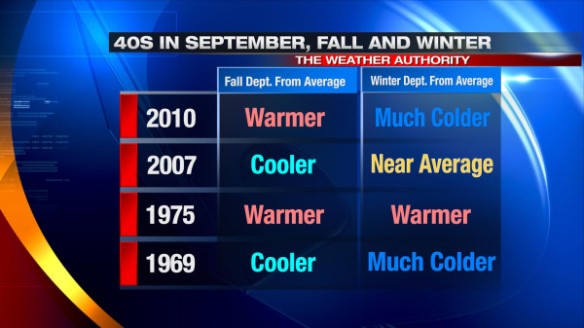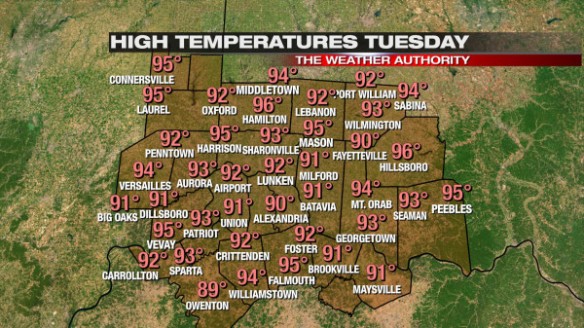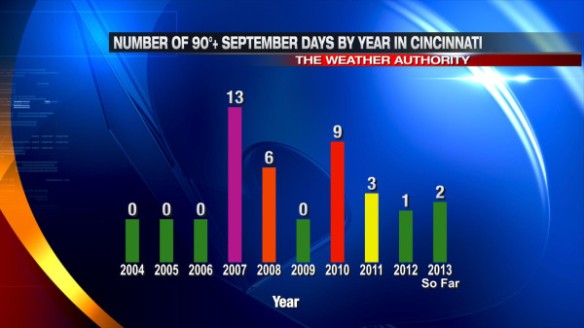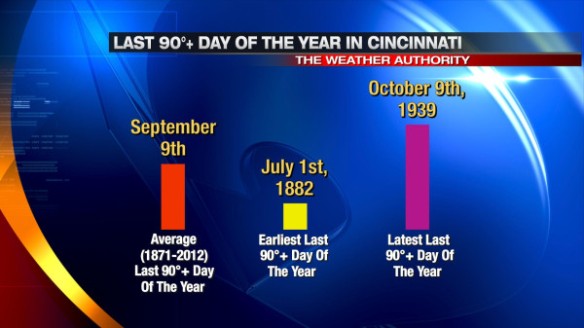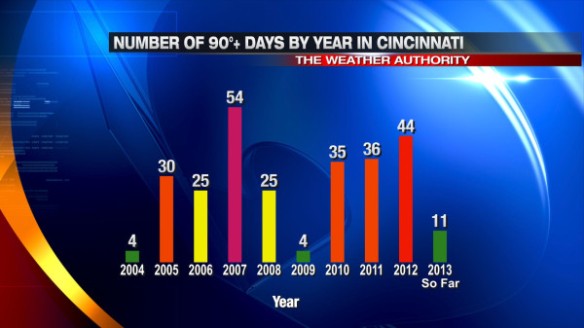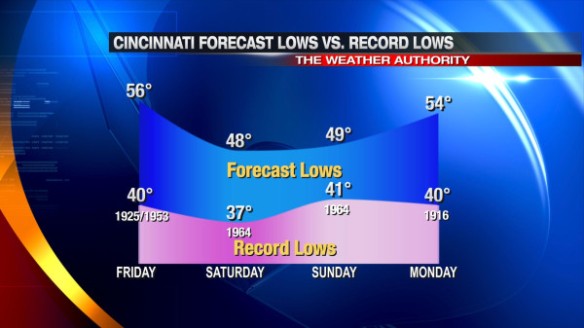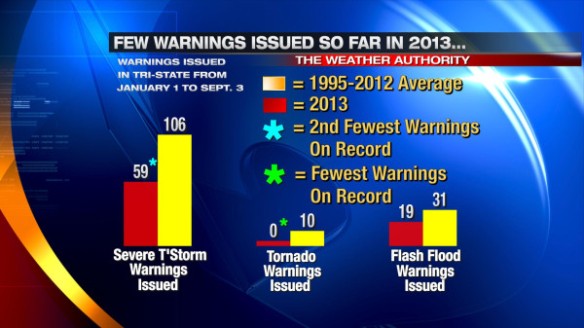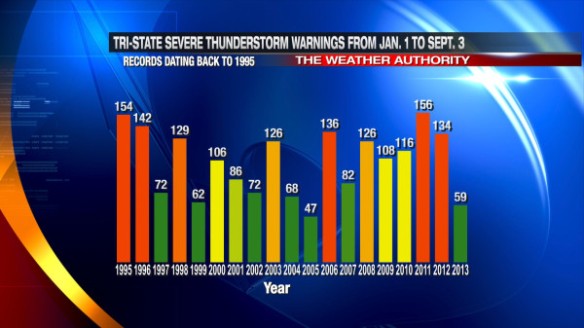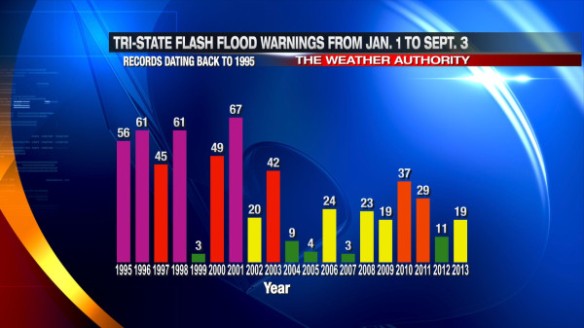The possibility for frost in the Tri-State rises from mid-September through early October. Our first light frost (a low temperature around 38°) of the season usually occurs in early October but has occurred as early as mid-September.
Frost is more likely when the air temperature drops to or below 36°. The average date for the first fall morning in Cincinnati with a temperature of 36° or lower is in early to mid-September. A damaging frost, however, can happen as early as late September.
Here’s some perspective on fall frost dates in Cincinnati:
The “average” above uses temperatures data from 1981 to 2010, and the “long-term average” uses temperature data from 1871 to 2012.
A morning with temperatures to or below 32° – as known as a “freeze” – first occurs in late October, on average. A freeze often signals the end of the growing season for most plants. The first “hard freeze” (low temperature of 28° or below) of the fall in Cincinnati typically occurs in early November. With the exception of hardiest and herbaceous crops, any plants that are able to survive a freeze will likely be killed in a “hard freeze.”
Here’s some perspective on fall freeze dates in Cincinnati:
If left outside, your plants will likely have a couple of weeks left before getting their first taste of fall frost. The latest ECMWF Weekly model run suggests late September will be near or warmer than average. I suspect our first frosts of the year will come in early to mid-October this year…right on schedule.

